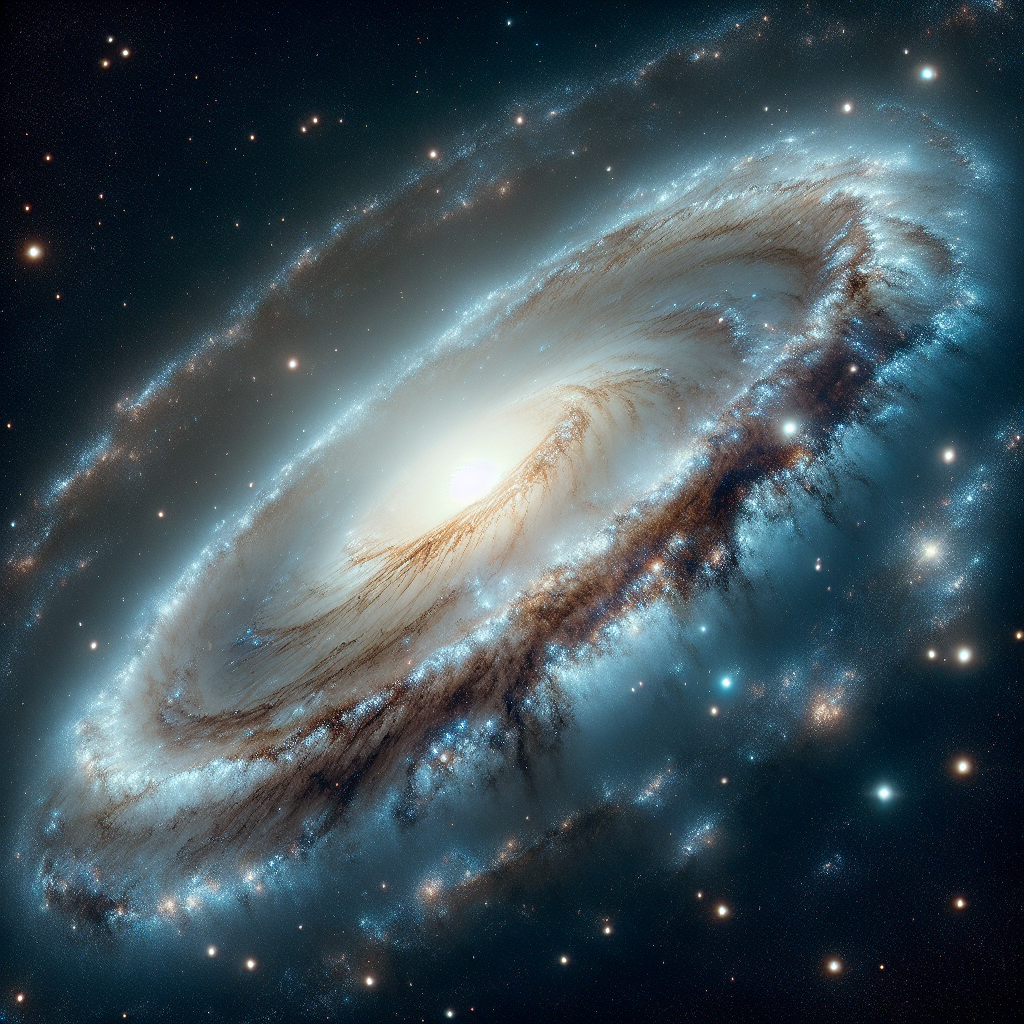Imagine floating through the universe and stumbling upon a colossal spiral galaxy, millions of light-years from Earth, glowing elegantly in the depths of space. That's what astronomers experience when they gaze upon NGC 1024, an awe-inspiring galaxy located in the constellation of Aries. Originally discovered back in 1785 by the astronomer William Herschel, NGC 1024 stands as a grand symbol of the universe's vastness and beauty. For centuries, it has piqued the curiosity of scientists and dreamers alike. But what exactly makes NGC 1024 so captivating, and why is it important to our understanding of the universe?
NGC 1024 is not just your average galaxy. Residing approximately 121 million light-years away, it belongs to a special class known as spiral galaxies. These galaxies are characterized by their stunning spiral arms filled with young, bright stars and sprawling cosmic dust. Stellar nurseries, a term referring to regions where new stars are born, abound in these magnificent spiral structures. When we look at NGC 1024, we are essentially peering into a cosmic snapshot that reveals the life cycle of stars and the breathtaking beauty of the universe.
The name 'NGC 1024' derives from the New General Catalogue (NGC), an astronomical catalog that comprises thousands of galaxies, star clusters, and nebulas. Compiling this catalog was no small feat; it took years of observations and the dedication of many astronomers. The NGC continues to be a vital resource for professionals and amateur stargazers wanting to navigate the cosmic ocean.
So, why should our generation care about galaxies like NGC 1024? The answer lies in understanding our place in the universe. As we grapple with existential challenges here on Earth, from climate change to social justice, expanding our horizons can offer valuable perspective. When we observe galaxies like NGC 1024, we're reminded of how small yet significant our role in the cosmic narrative is. It can inspire younger generations to embrace a more global, even universal mindset, fostering interconnectedness and empathy.
However, not everyone agrees on the significance of studying distant galaxies. There are pragmatic viewpoints that argue resources could be better spent addressing immediate problems on Earth. This perspective invites a critical examination: should the exploration of space come at the expense of terrestrial concerns? Those holding such views believe in a balanced approach where both earthbound issues and cosmic research can move forward hand in hand.
Still, there's no denying that the study of galaxies like NGC 1024 enhances our scientific knowledge in tremendous ways. Every discovery we make about how galaxies form and evolve adds to our overarching understanding of cosmology and physics. This, in turn, can lead to technological advancements. Remember, the space race led to many breakthroughs, like satellite technology, which we now rely on every day.
NGC 1024 serves not only as a beacon of scientific inquiry but also stimulates cultural and philosophical discourse. Artistic expressions, like music and visual arts, often draw inspiration from celestial bodies, reflecting the human longing for exploration and understanding. The alluring visuals of spiral galaxies inspire creativity and artistic expression, allowing us to explore the abstract side of comprehending the universe.
Despite its distance from us, the vast black canvas of space, dotted with magnificent galaxies like NGC 1024, feels like a shared human belonging. As we engage with these cosmic wonders, we get closer to unraveling the intricate story of our universe, one celestial body at a time. The stars may look like minute specks from Earth, but up close, they hold stories that span the cosmos—telling tales of creation, destruction, transformation, and infinite possibilities.
In today’s world, where much of society is busy calibrating digital lives around likes and followers, glimpsing the eternal and boundless wonders of space through entities like NGC 1024 can be humbling. We need these reminders that there's a broader universe out there, filled with mysteries that might never be fully understood but are worth exploring nonetheless. NGC 1024 isn't just a galaxy; it's an invitation to curiosity, creativity, and contemplation about what lies beyond our terrestrial boundaries.

